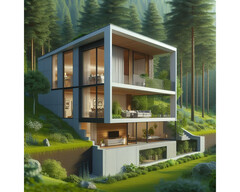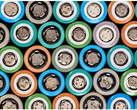In the world of energy-efficient homes, one innovation is at the forefront: the Passive House. In the 1970s, during the global oil crisis, the Canadian province of Saskatchewan was looking for energy-saving solutions. Harold Orr, a government engineer, developed an innovative concept for highly efficient homes with minimal energy requirements. The result was the Saskatchewan Conservation House in 1978, whose energy efficiency inspired similar projects. Orr and his colleagues relied on a number of measures to reduce energy consumption. These included:
- A very well insulated building envelope
- Optimal orientation of the house to the sun
- Natural ventilation
- Efficient use of energy
These and many other measures can reduce heating and cooling requirements by up to 90%. At the same time, Wolfgang Feist from Germany and Bo Adamson from Sweden were working on low-energy houses. In 1988, they combined their ideas to create the Passive House standard, which focuses on a minimum heating requirement of 15 kWh/(m²a).
Bronwyn Barry, an Australian architect, also played a key role in promoting the Passive House standard. Her pioneering work in the 1980s popularised the concept in Australia and around the world. The blower door test, a key component of the Passive House standard, checks the building envelope and helps to identify and eliminate leaks. During the test, the building envelope is subjected to a pressure test using a fan. This creates a difference in air pressure between the inside and outside of the building, which is then recorded using a manometer.
Globally, Passive Houses and refurbishments to this standard are mainly found in Europe (particularly Germany, Austria and Switzerland) and are slowly being introduced in the USA, China and Japan. In the US, however, the proportion of Passive Houses built in the last 10 years is still less than 1%, with residential projects in New York City and Boston, for example.
All climate zones benefit
Passive houses are suitable for different climates and not just for warm regions, as is often assumed. Depending on whether the house is located in a warm or cold climate, the construction method differs, for example for windows and facades. In cold climates, they insulate effectively and provide passive heat, while in warmer climates they provide passive cooling and additional shading.
For example, good thermal insulation can be achieved with triple-glazed windows with high air-tightness. In warmer regions, special coatings can be applied to the glass to reflect solar energy and reduce heat gain in summer.
Quelle(n)
MIT Technology Review | symbolic image: Bing AI















